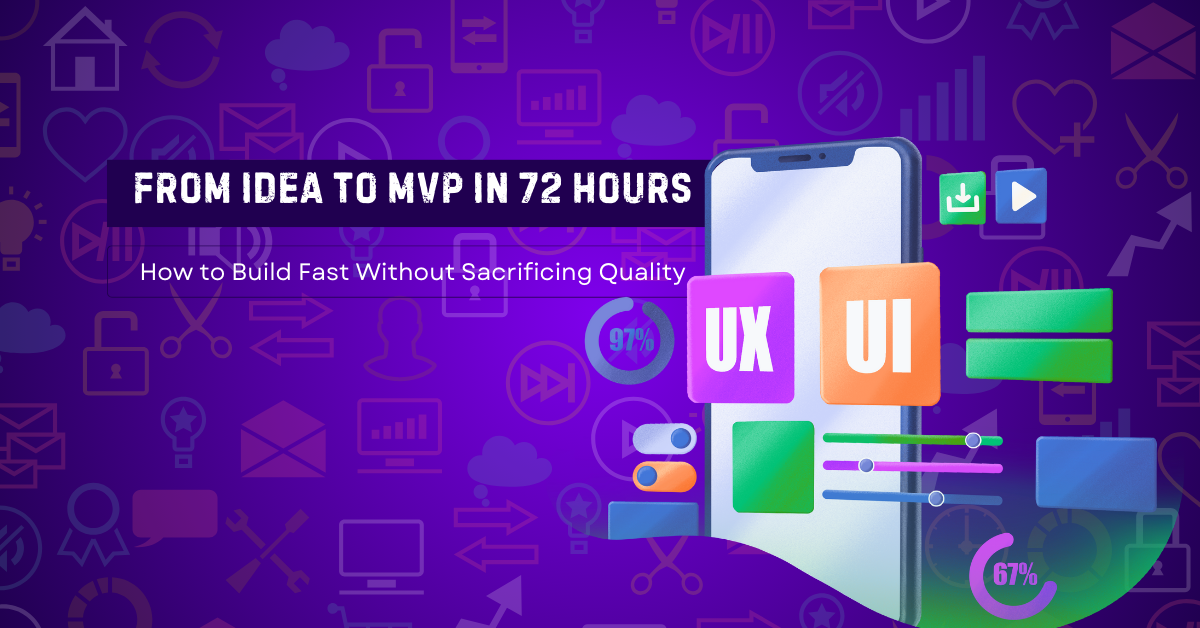Bringing an idea to life quickly is a major challenge for startups.
Moving from concept to a Minimum Viable Product (MVP) in just 72 hours might sound impossible, but with the right strategy, it’s achievable.
This guide covers the essential steps, tools, and methodologies to build an MVP fast without compromising quality.
Why Speed Matters in MVP Development
Speed is a competitive advantage. Startups that validate ideas quickly can:
- Test market demand before investing heavily.
- Gain early user feedback for iteration.
- Attract investors with a working prototype.
- Beat competitors by launching first.
However, speed shouldn’t come at the cost of quality. A poorly built MVP can damage credibility and waste resources. The key is strategic prioritization and leveraging the right tools.
Step 1: Define a Laser-Focused MVP Scope
A successful MVP solves one core problem for a specific audience with minimal features. Follow these principles:
- Define a clear problem statement. Example: “Enable remote teams to manage daily stand-ups asynchronously.”
- Prioritize must-have features. Use the MoSCoW method (Must-have, Should-have, Could-have, Won’t-have).
- Skip non-essential UI polish. Focus on usability, not aesthetics.
💡 Pro Tip: If a feature doesn’t directly validate your idea, drop it.
Step 2: Choose the Right Tech Stack for Speed
Picking the right tools can drastically cut development time. Consider:
| Category | Recommended Tools | Why? |
|---|---|---|
| Frontend | Next.js, React, Tailwind CSS | Fast, modular, and widely supported. |
| Backend | Firebase, Supabase, Node.js, Express.js | Serverless or lightweight backend. |
| Database | PostgreSQL, Firebase Firestore, Redis | Managed databases reduce setup time. |
| AI Features | OpenAI API, Hugging Face, LangChain | No need to build AI models from scratch. |
| Authentication | Auth0, Supabase Auth | Pre-built authentication saves days. |
| Hosting | Vercel, Netlify, AWS Amplify | Instant deployments and scaling. |
💡 Pro Tip: Use low-code/no-code tools like Bubble.io or Webflow if speed is the absolute priority.
Step 3: Adopt an Agile Development Workflow
A tight feedback loop is crucial when building fast. Here’s a 72-hour execution plan:
Day 1: Planning & Prototyping
- Sketch wireframes using Figma or Balsamiq.
- Define user flows and map the essential features.
- Set up a Trello or Notion board for task management.
Day 2: Development & Integration
- Build core functionality (e.g., authentication, database, basic UI).
- Use pre-built UI libraries (e.g., Material UI, Chakra UI).
- Integrate third-party APIs instead of building from scratch.
Day 3: Testing & Deployment
- Conduct usability tests with early adopters.
- Deploy on Vercel or Netlify for instant feedback.
- Gather feedback, fix bugs, and iterate.
💡 Pro Tip: If possible, have two parallel teams—one focusing on frontend, the other on backend—to speed up development.
Step 4: Validate Your MVP with Real Users
Your MVP is live—now what? Validate its success by:
✅ Tracking Key Metrics: Sign-ups, user engagement, and feature usage.
✅ Gathering Feedback: Conduct quick user interviews or surveys.
✅ Analyzing Market Fit: Do users find value? Are they willing to pay?
💡 Pro Tip: Use Hotjar or Google Analytics to track user interactions.
Final Thoughts: Building Fast Without Compromising Quality
Speed and quality can coexist if you:
- Keep the scope minimal and focus on one core problem.
- Use proven, scalable tools to reduce development time.
- Follow an agile process to adapt quickly.
- Validate with real users before expanding features.
Building an MVP in 72 hours is challenging, but startups that execute fast can gain a massive competitive edge.
Want to build an MVP in 72 hours? Let’s talk 🚀





